Any woman of a nervous disposition could be forgiven for feeling anxious about the approaching ritual, in spite of the fact that she would have been preparing for it for weeks. ‘You would never believe,’ wrote Fanny Burney, Assistant Keeper of the Wardrobe to Queen Charlotte, to her sister-in-law, ‘the many things to be studied for appearing with a proper propriety before crowned heads.’ She then gave a barely ironic list of ‘directions for coughing, sneezing, or moving, before the King and Queen’, none of which were permitted, finishing with the observation that ‘if, by chance, a black pin runs into your head, you must not take it out … If, however, the agony is very great, you may, privately, bite the inside of your cheek, or of your lips, for a little relief; taking care to do it so cautiously as to make no apparent dent outwardly.’ 26
There would have been endless fittings for Bessy’s presentation gown, which was hoop-skirted and elaborate and had to be worn with a train, as well as many expeditions out to buy the accessories required to wear with it, such as slippers, a fan, ostrich feathers and jewellery. Then she was forced to endure hours of deportment training so that she could approach the Sovereign elegantly, curtsy in a single flowing movement, without losing her balance or tripping on her gown, and then – the most nerve-racking part of the whole business – walk backwards out of the room, gathering up her train as she went, striving her utmost not to fall over it. Such practice was often carried out using a tablecloth as a simulated train. Bessy’s presentation went without a hitch, and after it she patiently remained in London for three months while Christopher attended Parliament.
He soon had his first opportunity to prove his loyalty to the Prime Minister. Ever since he had first entered Parliament in 1781 Pitt had been a passionate advocate of parliamentary reform, believing that it was vitally necessary for the preservation of liberty. Amongst plans he had proposed were the checking of bribery at elections, the disenfranchising of corrupt constituencies, and the shortening of the duration of Parliament. On 18 April, 1785, he proposed a Bill that would extinguish thirty-six rotten boroughs and transfer the seventy-two seats therein to the larger counties and to London and Westminster. The House was full, with 450 members present, of which 422 voted in the division. Christopher and his fellow Yorkshiremen, the gentlemen and freeholders of a great county, were a powerful lobby and voted to a man with the Prime Minister, but he was defeated by 248 votes to 174. Memories were short. The movement for reform had been born in a time of crisis, now over, and with a recovery in trade and a resurgence of confidence, the issue was no longer a live one. Pitt’s success in other areas had virtually killed it off and he did not try again. Perhaps Christopher became dejected by Pitt’s unwillingness to pursue further the subject of parliamentary reform, but in the six years he represented Beverley he never once spoke in the House. More likely is the possibility that his heart was never really in politics at all, being firmly ensconced at Sledmere.
On 30 May 1785, the day he and Bessy returned to Yorkshire after his first vote in the House, Christopher was one week into his thirty-sixth year, and a very rich man. His landed income alone for that year was the equivalent of over £300,000 at today’s values, and he had a corresponding sum in the bank of well over £4,000,000. It was money he was to put to good use in carrying out his ambitious plans. His first task in the preparation of the landscape he envisaged round the house was to clear away any buildings standing within its sightlines. These consisted of the few houses that remained from the old village, whose street had run in front of the house. Levelling work began in the summer of 1785 and continued over the next year. The inhabitants, who had no choice in the matter, were moved to new cottages, which had already been built elsewhere.
At the same time he was also planning a walled garden, a design for which he drew on the survey that had been commissioned by his Uncle Richard back in 1755. It was positioned to the east of that part of the old Avenue which was closest to the house, and was designed as an octagon, with tall brick walls enclosing it and hot houses against the north walls. The attention to detail in this design was typical of everything that Christopher did. Each door, for example, had its own reference identifying what type of lock it was to have and who should have a key, namely ‘Labourer, Gardiner, and Master’. His final flourish was the design of a magnificent Orangery, nine bays in length with a semi-domed roof, sited immediately to the south-east of the house, between it and the walled garden. Though the Orangery has long since been demolished and the old wood-framed hothouses have been replaced by modern ones, this garden still survives, its beautiful brick walls, pale pink when they were built using bricks from the estate’s own brickworks, now a deep rusty red. Some of them, which are of double thickness, have the remains of grates at their base, in which fires were lit to heat the walls through a series of inner pipes so that fruit could thrive on them.
With his plans for the garden and landscape well and truly in place, Christopher was at last ready to turn his attention to the house and bring to fruition the schemes he had been harbouring for many years. He was always sketching. His diaries and pocket books are full of hastily executed drawings, and undated designs and scribbles abound in the Library cupboards at Sledmere.
His passion for architecture was no secret to his friends, who were only too ready to turn to him for advice when they were planning to build. ‘I have an alteration in view for the House at Tatton,’ wrote his brother-in-law, William, in February, 1783, ‘… I shou’d be happy in your advice about my proceedings.’ 27 For his West Yorkshire neighbour, Richard Beaumont, whose park at Whitley Beaumont had been laid out by Brown, he designed a pair of lodges to stand ‘at the end of the Avenue where those stood built by my father’. In spite of Beaumont’s enthusiasm for the project, Christopher himself appears to have been unhappy with the designs. ‘The lodges are begun,’ wrote Beaumont in September, 1783, ‘but the cellar only of one is dug. It was my intention to build one this & another next year. If the weather continues bad I shall not finish either of them this Year … Tho’ you disapprove of your Plan it is by no means disagreeable to me but if you will send me one more worthy of execution I shall be obliged to you. I intended the buildings to be exactly the size of those you sent me last Year … I have lost yr. Plan of those lodges & the gates & have only one copy of the lodges.’ 28
Because he was not a trained architect, Christopher was never in any doubt that he would require assistance on his Sledmere project. The first person to whom he turned was the architect of Castle Farm and the ice-house, John Carr, whose pedigree when it came to building large houses was matchless. A disciple of Robert and James Adam, he had worked on, amongst others, Harewood for Edwin Lascelles, Kirby Hall for Stephen Thompson, Constable Burton for Sir Marmaduke Wyvill, Temple Newsam for Lord Irwin and Kilnwick House for John Grimston, all Yorkshire houses of great importance. He had also built the stables at Wentworth Woodhouse for the Marquess of Rockingham and at Castle Howard for the Earl of Carlisle. At some point, possibly in 1786, though it is difficult to say this with certainty since none of the designs are dated and no reference to them appears in the Account Book, he came up with a plan for the principal, south, elevation of the new house, which was to be a very traditional seven-bay front with a central pediment supported by six Ionic columns. It was not chosen by Christopher, who would have considered it far too conventional and, perhaps, not nearly grand enough.
Читать дальше
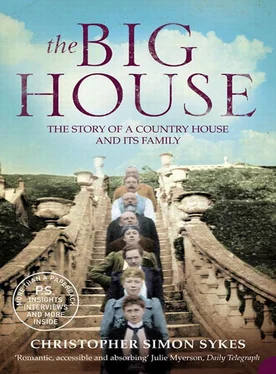
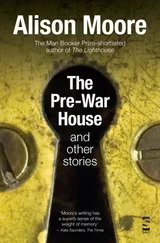

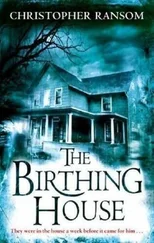



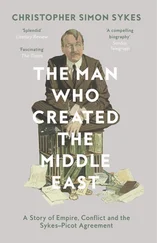
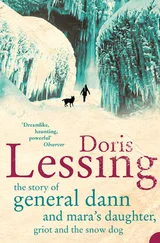
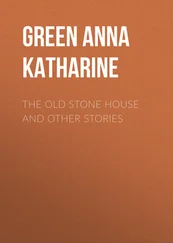


![Edward Ellis - Adrift on the Pacific - A Boys [sic] Story of the Sea and its Perils](/books/753342/edward-ellis-adrift-on-the-pacific-a-boys-sic-s-thumb.webp)